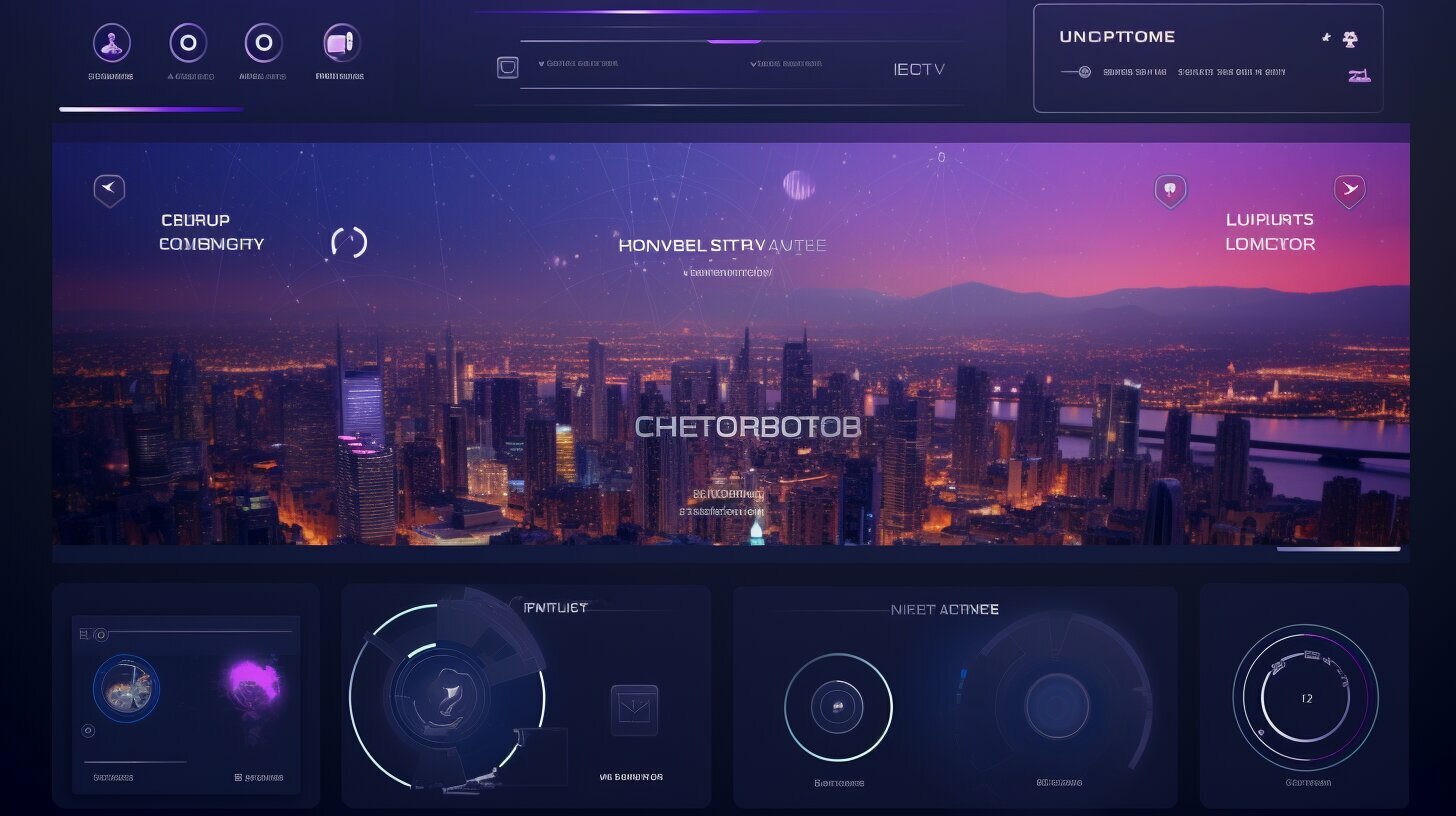In the digital era, businesses must master the art of crafting engaging content for social media platforms to succeed in capturing consumer attention. Social media platforms such as Instagram, TikTok, Facebook, and LinkedIn have become battlegrounds for businesses in their quest for visibility and customer engagement. With the competition being fierce, having a solid content strategy for social media is essential.
A content strategy serves as a roadmap, outlining the goals, tactics, and metrics for measuring success in the social media space. It takes into account the unique characteristics of each platform, the preferences of the target audience, and the types of content that resonate with them. Additionally, a well-defined content strategy considers audience demographics and platform preferences to create content that stands out.
Creating engaging content for social media involves a series of key steps. Firstly, setting clear goals helps businesses align their content creation efforts with their overall marketing objectives. Understanding the target audience, including demographics and preferences, enables businesses to tailor their content to better resonate with them. Selecting the right social media platforms is crucial, ensuring that the content reaches the intended audience effectively.
Producing high-quality content is essential for capturing and maintaining the attention of social media users. This includes crafting engaging captions, designing visually appealing graphics, and utilizing multimedia elements to enhance the overall content experience. Utilizing a social media content calendar helps maintain consistency and organization, ensuring that content is delivered consistently and timely.
Tracking and measuring the performance of social media content is vital for making data-driven decisions and improving content effectiveness. By utilizing analytics tools and monitoring key metrics, businesses can identify what works and what doesn’t, allowing them to make adjustments and optimize their content strategy accordingly.
Joining collaborative platforms like Contra can further enhance the skills of social media managers. These platforms offer opportunities for collaboration with experts and provide valuable insights into crafting engaging content that stands out in the crowded social media landscape.
Libraries, in particular, can maximize their presence on popular platforms like Instagram and Snapchat to reach younger demographics. Resources, tools, and examples are available to help libraries create engaging content that expands their reach and attracts new audiences.
In conclusion, crafting engaging content for social media platforms is crucial for businesses in the digital era. By mastering the art of content creation and implementing effective strategies, businesses can engage their audience, build brand awareness, and drive conversions.
Key Takeaways:
- Having a solid content strategy is crucial for success on social media platforms.
- Understanding your target audience is essential for crafting engaging content.
- Choosing the right social media platforms can maximize the reach of your content.
- Creating high-quality and visually appealing content can capture and maintain user attention.
- Tracking and measuring social media performance allows for data-driven decisions and continuous improvement.
Understanding the Power of Social Media Platforms
Social media platforms have become the battlegrounds for consumer attention, making it crucial for businesses to create captivating and engaging content that resonates with their target audience. From Instagram to TikTok, Facebook to LinkedIn, these platforms offer immense potential for businesses to reach a wide audience and build brand awareness. However, simply having a presence on social media is not enough. To stand out in the crowded digital space, businesses need to understand the power of these platforms and craft content that captures the interest and engagement of their target audience.
One of the key advantages of social media platforms is their ability to amplify a business’s message and expand its reach. With millions of active users scrolling through feeds every day, businesses have a unique opportunity to connect with their target audience on a personal level. By creating compelling posts that resonate with their audience’s interests, pain points, and aspirations, businesses can drive engagement, increase brand visibility, and build a loyal following.
To effectively utilize the power of social media platforms, businesses need to focus on writing engaging content that stands out from the noise. This involves understanding the preferences and behaviors of the target audience and tailoring content to suit their needs. Whether it’s through arresting visuals, thought-provoking captions, or interactive elements, businesses must aim to create an emotional connection with their audience to capture their attention and elicit a response.
| Key Takeaways: |
|---|
| Create captivating and engaging content that resonates with the target audience. |
| Utilize the power of social media platforms to expand reach and connect with a wide audience. |
| Write engaging content that stands out from the noise. |
| Understand the preferences and behaviors of the target audience to tailor content accordingly. |
By mastering the art of crafting engaging content for social media platforms, businesses can unlock the potential of these platforms to drive brand awareness, foster customer engagement, and ultimately, achieve their marketing goals.
The Importance of a Content Strategy for Social Media
A solid content strategy for social media is essential for businesses to achieve their goals, maximize engagement, and optimize their online presence. In today’s digital era, social media platforms like Instagram, TikTok, Facebook, and LinkedIn have become highly competitive spaces where businesses vie for consumer attention. With countless posts and updates flooding users’ feeds, it is crucial for businesses to stand out and capture their target audience’s interest.
Having a well-defined content strategy allows businesses to set clear goals and objectives for their social media efforts. By identifying what they want to achieve, whether it’s increasing brand awareness, driving website traffic, or generating sales, businesses can tailor their content creation and distribution strategies accordingly. This strategic approach helps focus their efforts and ensures that every piece of content is created with a specific purpose in mind.
Another important aspect of a content strategy is understanding the target audience. By conducting thorough research, analyzing the demographics, and identifying their preferences, businesses can create content that resonates with their target audience. This tailored approach ensures that the content is more engaging, compelling, and relevant to the intended audience.
Furthermore, a content strategy includes selecting the right social media platforms for maximum impact. Each platform has its unique features, user demographics, and engagement patterns. By aligning the content strategy with the platforms that best suit their target audience and marketing objectives, businesses can optimize their social media content and achieve better results.
| Benefits of a Content Strategy for Social Media |
|---|
| Goal alignment: Helps businesses align their content creation efforts with overall marketing objectives. |
| Audience targeting: Allows businesses to create content that resonates with their target audience, increasing engagement and relevance. |
| Platform optimization: Ensures businesses select the most suitable social media platforms for their content strategy, maximizing visibility and impact. |
| Consistency and organization: Provides a social media content calendar for planning, scheduling, and tracking content, ensuring consistency and progress. |
| Data-driven decision-making: Enables businesses to track and measure the performance of their social media content, gaining insights to improve future strategies. |
A content strategy for social media is a vital tool that allows businesses to effectively reach and engage their target audience. By setting clear goals, understanding their audience, selecting the right platforms, creating high-quality content, utilizing a content calendar, and tracking performance, businesses can optimize their social media efforts and achieve their desired outcomes.
Steps to Create an Effective Social Media Content Strategy
Creating an effective social media content strategy involves several crucial steps that can significantly impact your engagement and success on these platforms. Whether you are managing social media for a business or personal brand, taking a strategic approach to content creation is key.
Step 1: Set clear goals: Before diving into content creation, clearly define your objectives for social media. Are you aiming to increase brand awareness, drive website traffic, or generate leads? Setting goals will help shape your content strategy and inform the types of content you create.
Step 2: Understand your target audience: To create engaging content, it’s essential to understand who your target audience is and what they want. Conduct audience research to identify their demographics, interests, and pain points. This information will guide your content creation and help you tailor your messaging to resonate with your audience.
Step 3: Choose the right platforms: Not all social media platforms are created equal, and different platforms cater to different audiences. Identify which platforms your target audience frequents and focus your efforts there. For example, if your target audience is primarily Gen Z, platforms like TikTok and Instagram may be more effective than Facebook and LinkedIn.
| Social Media Platform | Target Audience |
|---|---|
| TikTok | Gen Z and younger millennials |
| Millennials and younger demographics | |
| Wide range of demographics | |
| Professionals and B2B audiences |
Step 4: Create high-quality content: Now that you know your goals, your target audience, and the platforms you’ll be using, it’s time to create compelling content that captures attention. Use a mix of written, visual, and multimedia content to engage your audience. Craft catchy headlines, use eye-catching images, and incorporate videos or interactive elements where appropriate.
By following these steps and consistently evaluating your social media performance, you’ll be well on your way to crafting engaging posts and building a successful social media presence.
Setting Goals for Social Media Content
Setting specific and measurable goals for your social media content is the first step towards crafting engaging and impactful posts. By establishing goals, you can align your content creation efforts with your overall marketing objectives and gauge the effectiveness of your social media strategy.
When setting goals for your social media content, consider what you want to achieve. Are you looking to increase brand awareness, generate leads, drive website traffic, or boost sales? Each goal requires a different approach and content strategy. By defining your objectives, you can tailor your content to meet the needs and interests of your target audience.
Once you have established your goals, you can measure your progress and adjust your strategy accordingly. Use analytics tools to monitor key performance metrics, such as engagement rate, reach, and conversions. This data will provide insights into what is working and what needs improvement, allowing you to optimize your social media content and achieve better results.
Social Media Content Goals:
- Increase brand awareness and visibility
- Drive website traffic and generate leads
- Boost audience engagement and interaction
- Improve customer satisfaction and loyalty
- Increase sales and revenue
Remember to set realistic goals that are both challenging and attainable. Break them down into smaller milestones to track your progress over time. With clear goals in place, you can create content that resonates with your audience, captures their attention, and ultimately drives the desired actions.
| Key Metrics to Track: | Explanation | Tools to Use |
|---|---|---|
| Engagement Rate | Measure the level of interaction and involvement with your content | Facebook Insights, Instagram Insights, Twitter Analytics |
| Reach | How many unique users have seen your content | Facebook Insights, Instagram Insights, Twitter Analytics |
| Conversions | Track the number of desired actions taken by users, such as form submissions or purchases | Google Analytics, Facebook Pixel, LinkedIn Insights |
By setting goals for your social media content, you can effectively measure, optimize, and refine your strategy to ensure that your posts are engaging, relevant, and impactful. Take the time to define your objectives, monitor your progress, and adapt your approach as needed. With a well-crafted content strategy in place, you can maximize the potential of social media platforms and drive meaningful results for your business.
Understanding Your Target Audience
Understanding your target audience is crucial for creating captivating content that sparks their interest and drives engagement on social media platforms. By knowing who your audience is, you can tailor your content to be relevant, valuable, and compelling to them.
Start by conducting thorough research to gain insights into your audience’s demographics, interests, and preferences. This information will help you craft content that resonates with them and effectively communicates your message.
Once you have a clear understanding of your target audience, you can create content that aligns with their needs and desires. Use storytelling techniques, visuals, and language that appeal to their emotions and capture their attention. By speaking directly to your audience, you can establish a connection and build trust.
| Key Points | Benefits |
|---|---|
| Understand your audience demographics | Create targeted content that appeals to their interests |
| Analyze audience preferences | Customize content formats and delivery methods |
| Identify audience pain points | Create solutions and valuable resources |
Remember to continuously monitor and analyze your audience’s response to your content. This will help you refine your strategy and make data-driven decisions. By consistently evaluating your performance and adapting your content accordingly, you can ensure that your messages are resonating with your target audience and driving engagement on social media platforms.
Selecting the Right Social Media Platforms
Each social media platform has its own strengths and audience demographics, so it’s essential to choose the right platforms that align with your target audience and content goals. Instagram, with its visually-driven format and younger user base, is ideal for businesses aiming to showcase products or services through engaging visuals. TikTok, known for its short-form videos, is a great platform to reach a younger and more entertainment-focused audience. Facebook, being the largest social media platform, offers a diverse user base and various advertising options, making it suitable for businesses targeting a wide range of demographics. LinkedIn, on the other hand, caters primarily to professionals and can be beneficial for B2B companies or those aiming to establish thought leadership in their industry.
To make an informed decision about which platforms to focus on, consider your target audience’s demographics, interests, and online behavior. Conduct research to understand where your audience spends their time and engages the most. Analyze competitor strategies and their success on different platforms to gain insights. Ultimately, choose the platforms that will allow you to create captivating content that resonates with your target audience.
Key Considerations for Platform Selection
| Platform | Audience Demographics | Key Strengths |
|---|---|---|
| Younger demographics, visual content enthusiasts | Engaging visuals, influencer marketing potential | |
| TikTok | Youthful and entertainment-focused audience | Short-form videos, viral trends |
| Diverse user base across ages and interests | Large audience, robust advertising options | |
| Professionals and B2B audience | Thought leadership, networking opportunities |
By understanding the unique features and demographics of each platform, businesses can strategize their content creation efforts to maximize engagement and reach their target audience effectively.
Creating High-Quality Content for Social Media
Creating high-quality content is the key to capturing and retaining your audience’s attention on social media platforms. In today’s digital era, where platforms like Instagram, TikTok, Facebook, and LinkedIn have become battlegrounds for consumer attention, businesses must rise above the noise by crafting captivating content that stands out.
But what makes content high-quality? It’s a combination of factors. Firstly, your content needs to align with your target audience’s preferences and interests. Conducting thorough research and understanding your audience’s demographics, habits, and preferences will help you tailor your content to resonate with them. This could involve using relevant hashtags, incorporating trending topics, or leveraging user-generated content.
Furthermore, visual appeal plays a crucial role in captivating your audience’s attention. Utilize visually appealing graphics, videos, and images that are aesthetically pleasing and aligned with your brand identity. Remember, people’s attention spans are short on social media, so make sure your content is eye-catching and easily digestible.
Lastly, don’t underestimate the power of storytelling. Engaging storytelling can help you connect with your audience on an emotional level, making your content memorable and shareable. Share relatable anecdotes, narratives, or customer success stories that resonate with your audience and evoke an emotional response.
| Key Points | Benefits |
|---|---|
| Align content with audience preferences and interests | Increases engagement and resonance |
| Utilize visually appealing graphics and multimedia | Captures attention and enhances brand perception |
| Incorporate engaging storytelling | Makes content memorable and shareable |
By focusing on these key strategies and consistently creating high-quality content, businesses can effectively engage their audience, build brand awareness, and drive conversions on social media platforms.
Utilizing a Social Media Content Calendar
A social media content calendar helps you stay organized, maintain consistency, and enhance the effectiveness of your engagement strategies. By planning and scheduling your posts in advance, you can ensure a steady flow of content that aligns with your overall marketing objectives. This allows you to strategically craft and curate content that resonates with your target audience, resulting in higher engagement rates and increased brand awareness.
One of the key benefits of using a social media content calendar is the ability to maintain consistency in your posting schedule. Consistency is crucial in building an online presence and establishing trust with your audience. With a content calendar, you can plan your posts ahead of time, ensuring a regular stream of content that keeps your audience engaged and interested.
In addition to maintaining consistency, a content calendar also helps you optimize your posting times. By analyzing the behavior and preferences of your target audience, you can identify the most opportune times to publish your content. This ensures that your posts are seen by a larger number of people, maximizing your reach and potential for engagement.
| Benefits of a Social Media Content Calendar | How to Utilize a Content Calendar |
|---|---|
|
|
By utilizing a social media content calendar, businesses can streamline their content creation process, plan strategically, and make data-driven decisions to improve their social media performance. It provides a framework for consistent and effective engagement with your target audience, ultimately helping you achieve your social media marketing goals.
Tracking and Improving Social Media Performance
Continuously tracking and analyzing performance metrics is essential for optimizing your social media content and improving your engagement strategies. By monitoring key metrics such as reach, impressions, clicks, likes, comments, and shares, you can gain valuable insights into what resonates with your audience and what doesn’t. This data-driven approach allows you to identify patterns, trends, and areas for improvement, enabling you to make informed decisions and refine your content strategy.
One effective way to track social media performance is by utilizing analytics tools provided by platforms such as Instagram, Facebook, and LinkedIn. These tools offer comprehensive data and metrics that help you measure the success of your content. For example, you can track the number of followers gained or lost, the engagement rate of your posts, and the demographic information of your audience. This information allows you to understand who your audience is, what content they prefer, and how to better tailor your content to their interests.
In addition to platform analytics, there are also third-party tools available that provide more advanced insights and analytics. These tools can help you track metrics across multiple social media platforms, compare performance across different time periods, and even benchmark your performance against industry standards. By leveraging these tools, you can gain a deeper understanding of your social media performance and make data-driven decisions to optimize your content and engagement strategies.
Another important aspect of tracking social media performance is setting benchmarks and goals. By establishing specific, measurable, achievable, relevant, and time-bound (SMART) goals, you can track your progress and evaluate the effectiveness of your content strategy. For example, you might set a goal to increase your Instagram engagement rate by 10% within three months. By monitoring your performance against these goals, you can identify what’s working and what needs improvement, allowing you to continuously refine your social media content and engagement techniques.
| Metric | Definition |
|---|---|
| Reach | The number of unique users who see your content |
| Impressions | The total number of times your content is displayed |
| Engagement rate | The percentage of your audience that interacts with your content (likes, comments, shares, etc.) |
| Click-through rate (CTR) | The percentage of users who click on a link or call-to-action in your content |
In conclusion, tracking and improving social media performance is crucial for optimizing your content strategy and boosting engagement. By continuously monitoring metrics, leveraging analytics tools, setting goals, and using third-party platforms, you can gain valuable insights and make data-driven decisions to enhance your social media presence. Remember, understanding your audience and tailoring your content to their preferences is key to building a strong brand and driving conversions on social media.
Enhancing Skills with Collaborative Platforms
Collaborative platforms like Contra offer a wealth of resources, expert help, and opportunities for collaboration, enabling social media managers to sharpen their skills and stay updated with industry trends. These platforms provide a supportive community where professionals can connect, learn, and collaborate, ultimately helping them create more engaging content for social media platforms.
By joining a collaborative platform like Contra, social media managers gain access to a diverse network of experts and professionals in the field. This allows them to tap into a wealth of knowledge and guidance, helping them to enhance their skills and stay up-to-date with the latest trends and strategies. From content creation techniques to social media marketing tactics, these platforms offer valuable insights to help professionals level up their skills.
Collaborative platforms also provide opportunities for collaboration and networking. They often facilitate projects and partnerships among members, allowing social media managers to collaborate with experts and industry peers. The collective brainstorming and feedback received through these collaborations can lead to fresh ideas and unique perspectives, resulting in more engaging and innovative content for social media.
Benefits of Collaborative Platforms:
- Access to a community of experts and professionals in social media marketing
- Opportunities to learn from and collaborate with industry peers
- Stay updated with the latest trends and strategies in social media content creation
- Gain valuable insights and feedback to improve content quality
- Expand professional network and build industry connections
Collaborative platforms like Contra can be a game-changer for social media managers looking to enhance their skills and create more engaging content. By leveraging the resources, expert help, and collaborative opportunities provided by these platforms, professionals can take their social media strategies to the next level and achieve greater success in the competitive digital landscape.
| Benefits of Collaborative Platforms | |
|---|---|
| Access to a community of experts and professionals in social media marketing | Stay updated with the latest trends and strategies |
| Opportunities to learn from and collaborate with industry peers | Gain valuable insights and feedback to improve content quality |
| Expand professional network and build industry connections |
Maximizing Presence on Instagram and Snapchat for Libraries
Libraries can leverage the popularity of Instagram and Snapchat to connect with younger audiences and build a strong online presence in the digital world. These platforms offer unique opportunities for libraries to showcase their resources, events, and services in a visually engaging and interactive way.
On Instagram, libraries can create visually appealing posts that highlight their book collections, reading recommendations, and behind-the-scenes glimpses into library operations. They can also use Instagram Stories to share real-time updates, host Q&A sessions, or promote upcoming events. By using relevant hashtags, libraries can increase the discoverability of their content and attract followers who are interested in similar topics.
Snapchat, on the other hand, allows libraries to engage with their audience through disappearing photos and videos. Libraries can use this platform to share short snippets of events, offer sneak peeks into new releases, or provide interactive experiences like quizzes or challenges. Additionally, libraries can collaborate with influencers or local community members to reach a wider audience and increase brand visibility.
| Snapchat | |
|---|---|
| Visually appealing posts | Disappearing photos and videos |
| Book collections and reading recommendations | Short snippets of events |
| Instagram Stories for real-time updates and Q&A sessions | Interactive experiences like quizzes |
| Relevant hashtags for increased discoverability | Collaboration with influencers |
By maximizing their presence on Instagram and Snapchat, libraries can effectively engage younger audiences, create a sense of community, and increase awareness of the valuable resources and services they offer. Libraries can also utilize analytics provided by these platforms to gain insights into audience preferences and refine their content strategy accordingly. With a well-crafted social media strategy, libraries can position themselves as places of knowledge, inspiration, and connection in the digital age.
Building Brand Awareness and Driving Conversions
A well-executed social media strategy is a powerful tool for building brand awareness, fostering customer engagement, and driving conversions. In today’s digital era, businesses must harness the potential of social media platforms like Instagram, TikTok, Facebook, and LinkedIn to connect with their target audience effectively.
By crafting engaging content and strategically targeting their audience, businesses can increase brand visibility and reach a wider customer base. High-quality visuals, compelling captions, and interactive elements can capture attention and create a memorable brand experience. Utilizing various content formats, such as photos, videos, stories, and live streams, allows businesses to showcase their products or services in an authentic and engaging way.
Furthermore, an effective social media strategy goes beyond just creating captivating content. It includes the implementation of call-to-actions (CTAs) that drive conversions. Whether it’s directing users to a landing page, encouraging sign-ups, or promoting a limited-time offer, well-crafted CTAs can guide users through the customer journey and result in meaningful actions.
| Benefits of a Well-Crafted Social Media Strategy for Businesses: |
|---|
| 1. Increased brand awareness |
| 2. Enhanced customer engagement |
| 3. Improved brand loyalty |
| 4. Higher conversion rates |
| 5. Expanded customer reach |
To maximize the impact of a social media strategy, it is essential to regularly analyze and measure its performance. By tracking key metrics, such as engagement rate, reach, and conversion rate, businesses can gain valuable insights into what works and what can be optimized. These insights enable data-driven decision-making, leading to continuous improvement and better results over time.
In conclusion, a well-executed social media strategy is vital for businesses aiming to build brand awareness, foster customer engagement, and drive conversions. By creating engaging content, implementing effective CTAs, and monitoring performance, businesses can make the most of social media platforms to connect with their target audience and achieve their marketing goals.
Conclusion
Crafting engaging content for social media platforms is a crucial skill in today’s digital landscape, and a well-executed strategy can significantly enhance your online presence and business success. With social media platforms like Instagram, TikTok, Facebook, and LinkedIn becoming battlegrounds for consumer attention, businesses need a solid content strategy to stand out in the crowded digital space.
A well-defined content strategy outlines clear goals, identifies the target audience, and selects the right platforms that align with the business objectives. It takes into account audience demographics, platform preferences, and content types that resonate with the target audience.
Creating high-quality content is key to capturing the audience’s attention and driving engagement. From writing compelling captions to designing visually appealing graphics, utilizing multimedia elements, and optimizing posting times, businesses can craft content that not only stands out but also drives conversions.
By utilizing a social media content calendar, businesses can ensure consistency and organization in their content creation efforts. This helps in planning content in advance, scheduling posts, and optimizing posting times based on audience behavior and platform algorithms.
Tracking and measuring the performance of social media content is crucial to understanding its effectiveness and making data-driven decisions to improve. Analyzing key metrics, leveraging insights, and constantly refining the content strategy are essential for long-term success.
Whether you’re a social media manager looking to enhance your skills or a library seeking to maximize your presence on platforms like Instagram and Snapchat, there are resources, tools, and collaboration opportunities available to help you achieve your goals.
In conclusion, with a well-crafted social media strategy, businesses can engage their audience, build brand awareness, and drive conversions. By mastering the art of crafting engaging content and implementing an effective content strategy, you can unlock the true potential of social media platforms and take your business to new heights.
FAQ
Q: Why is crafting engaging content for social media platforms important?
A: Crafting engaging content is essential for businesses in the digital era to stand out in the competitive landscape and capture consumer attention on social media platforms.
Q: Which social media platforms should businesses focus on?
A: Businesses should consider their target audience demographics and platform preferences to determine the right social media platforms for their content strategy.
Q: What is a content strategy for social media?
A: A content strategy for social media outlines goals, tactics, and metrics for measuring success. It considers audience demographics, platform preferences, and content types that resonate with the target audience.
Q: How can businesses create high-quality content for social media?
A: Businesses can create high-quality content for social media by writing engaging captions, designing visually appealing graphics, and utilizing multimedia elements to make content more compelling.
Q: Why is a social media content calendar important?
A: Utilizing a social media content calendar helps businesses maintain consistency, plan content in advance, schedule posts, and optimize posting times based on audience behavior and platform algorithms.
Q: How can businesses track and improve social media performance?
A: Businesses can track and measure social media performance using analytics tools, monitoring key metrics, and leveraging insights gained to make data-driven decisions and improve content effectiveness.
Q: How can social media managers enhance their skills?
A: Social media managers can enhance their skills by joining collaborative platforms like Contra, which offer expert help, opportunities for collaboration, and valuable insights into crafting engaging content.
Q: How can libraries maximize their presence on Instagram and Snapchat?
A: Libraries can maximize their presence on Instagram and Snapchat by using examples, tips, and tools available to create engaging content and expand their reach among younger demographics.
Q: How does a well-crafted social media strategy contribute to brand awareness and conversions?
A: A well-crafted social media strategy with engaging content, strategic targeting, and effective call-to-actions can build brand awareness, drive customer engagement, and ultimately lead to conversions.







